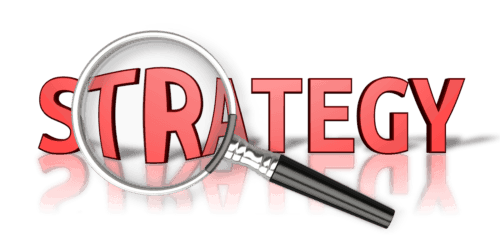In 1980 Michael Porter brought to us the concept of the three generic strategies (low cost, differentiation and focus). The first two have been quite well understood, but the focus strategy looks that there is an important number of firms that they do not understand the importance of that strategy well. The focus strategy would be able to allow SMB to compete with global players, and win the battle at least at local level, or in one specific industry niche, or in any specific product/service.
We have countries like Germany that shows us how successful can be the focus strategy. In Germany you can find villages with SMB that are worldwide leaders in their products. Those firms follow a focus strategy concentrating all their resources in a particular product, and/or industry and/or market in order to be the leader of that segment. In my experience working with German organizations, I would not say that they have better skills or resources than other European or North America countries. However, those German firms use a more realistic short-term and practical focus strategy. On the other hand, we have other countries that CEOs strategy is thinking in a much broader way losing the opportunity to concentrate their limited resources in specific “market battles.”
Why do not firms realize the focus strategy advantages?
-
Assuming that as many growing opportunities (more products, more markets, more industries, and so on) that you get in, faster growth and profitability
However, following many growing opportunities especially for SMB used to create organizational chaos and an inefficient management of limited resources. The consequence used to be: poor differentiation, poor cost structure, lack of focus, then facing low growth and profitability. We should be aware that there are large firms that they are facing exactly the same problem for lack of focus, even though they are large organizations.
Uncertainty for the inexperience in focus strategy
Because firms are facing growth and profitability issues, they are afraid that just focusing on a niche could be a very limited and risky strategy. They wonder what about the future of the company if the chosen niche is not the correct.
Falling in the trap of nice growth plans from dreamers Sales Managers
What is it nicer? Having a plan that says we are going to be the global leader, in all the geographies, all the most important industries and providing a broad portfolio of solutions to our customers; or having a plan that says we are going to be the leader of a very narrow product line, providing that solution for a specific industry, in a defined region. Well, the first plan sound nicer. Furthermore, if both strategies are working well, the first one “promise” higher results. Indeed, the first plan used to be a plan that required massive investment, and much higher risk.
The trap of being a customer centric organization
There are managers who understand that a customer centric organization is one that offers one-stop-shop strategy. They tried to be everything to all customers. Their objective is growing with customers and providing all the services that they could need, avoiding that competitors’ entry in those accounts. Again following one-stop-shop strategy push companies to lose focus: investing in many products and geographies, offering some products not competitive from the quality and cost perspective, customer perception about our company is being damage for not delivering value, and the result is reducing our firm profitability because the company is in a low level of the experience curve for some of those products. Being a customer centric organization should be a firm that can deliver real value to customers, I mean best value for money, and a proven successful way is using a focus strategy with leading products of high quality and competitive price in their market segment.
Learning from large firms experience
Unfortunately, there are not too much literature about SMB success stories. In fact, so many SMB CEOs learn from large companies’ experiences, and they try to replicate their strategies. But we cannot compete successfully with global companies using their own strategies. Focus is a success strategy where SMB can win the battle in specific niches.
Forgetting that one Key Success Factor of strategy execution is strategy and resources alignment
There are companies that define their strategy (where they would like to be in the future) and they forget the viability analysis of that strategy. Do we have enough resources to implement that strategy at the speed required? Performing an alignment between strategy and resources availability could we push us to follow a focus strategy.
There are a few questions that can help us to review the coherence of our strategy, for instance:
- What are our current (the actual, not what we would like to have or what we are working on) differentiators?
- What is our current (the actual, not what we would like to provide) value proposition?
- What is our customer targeting/segmentation strategy?
- Do we have enough resources to implement with the speed necessary our customer targeting strategy?
Using those questions in a self critical way could help us to realize that our firm could need a focus strategy to avoid getting “stuck in the middle.”
